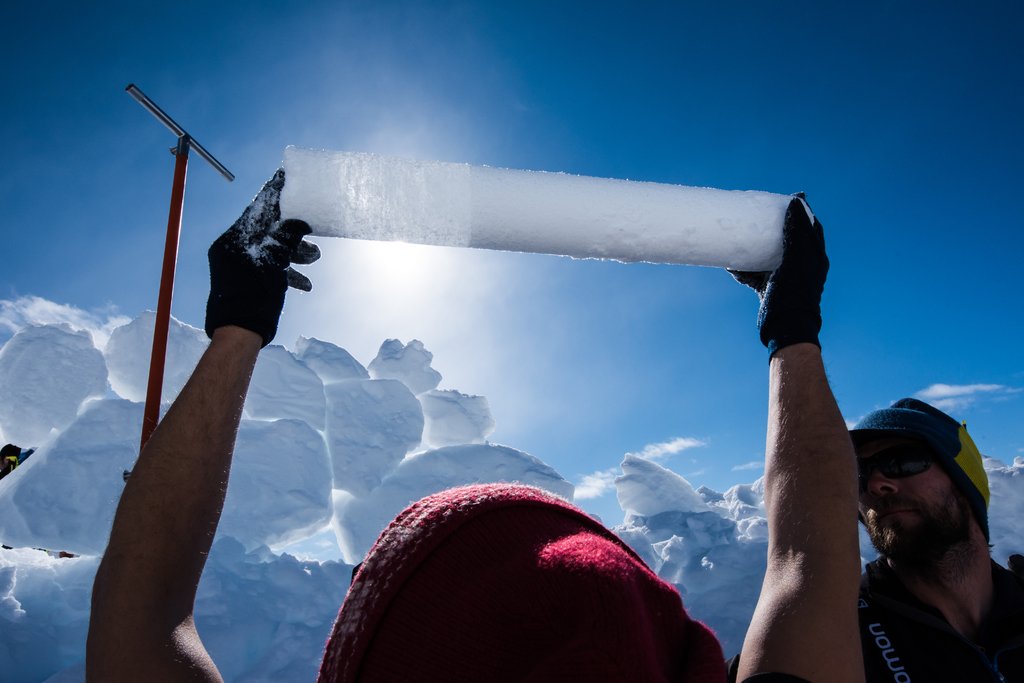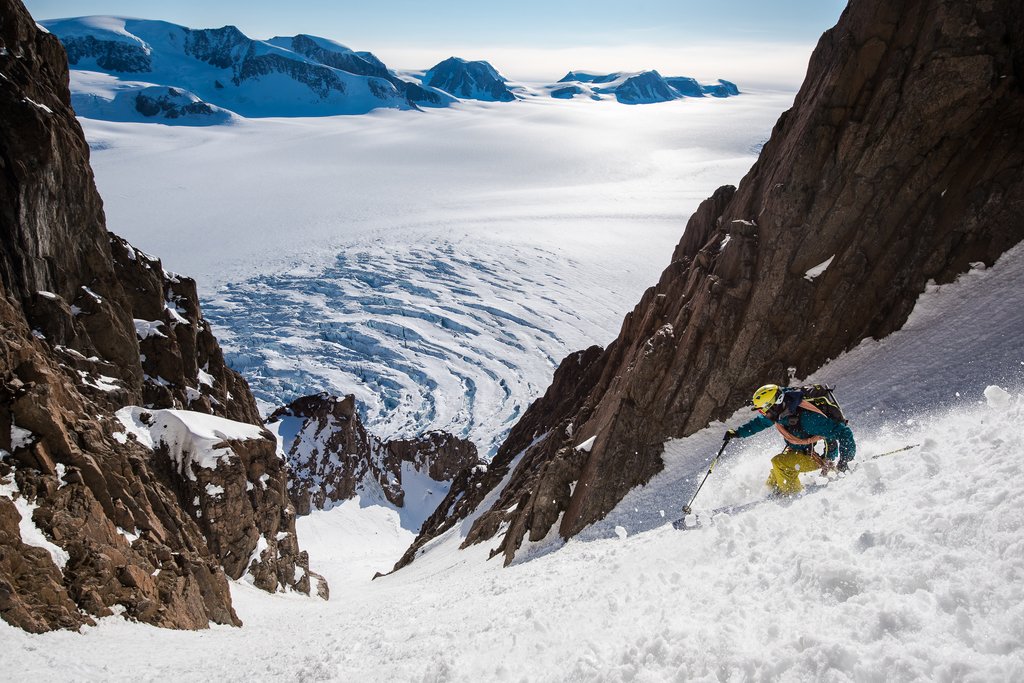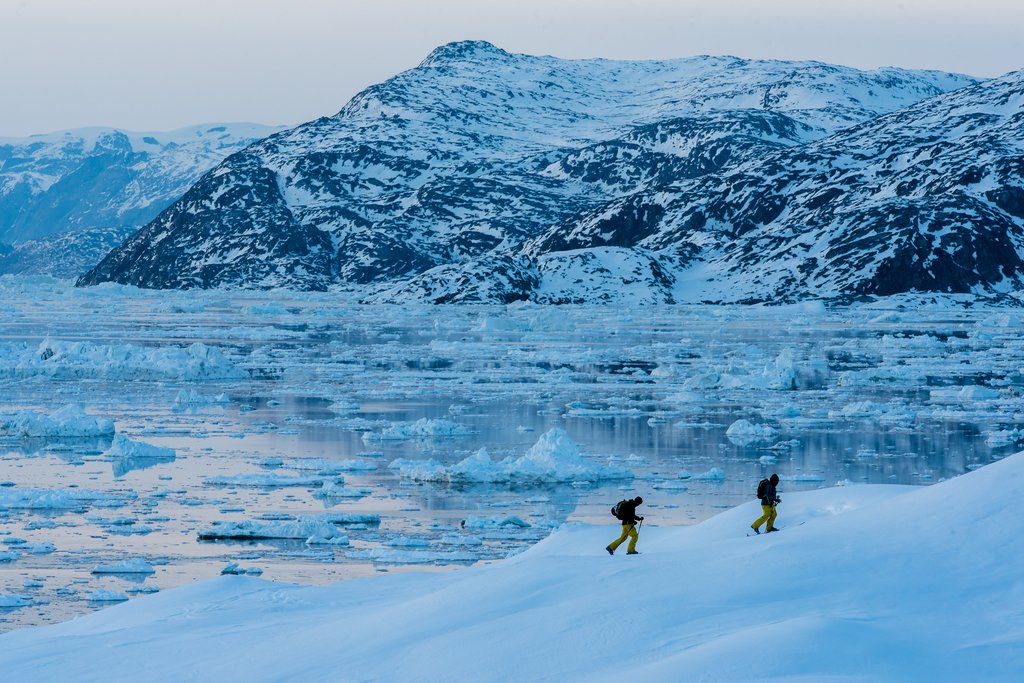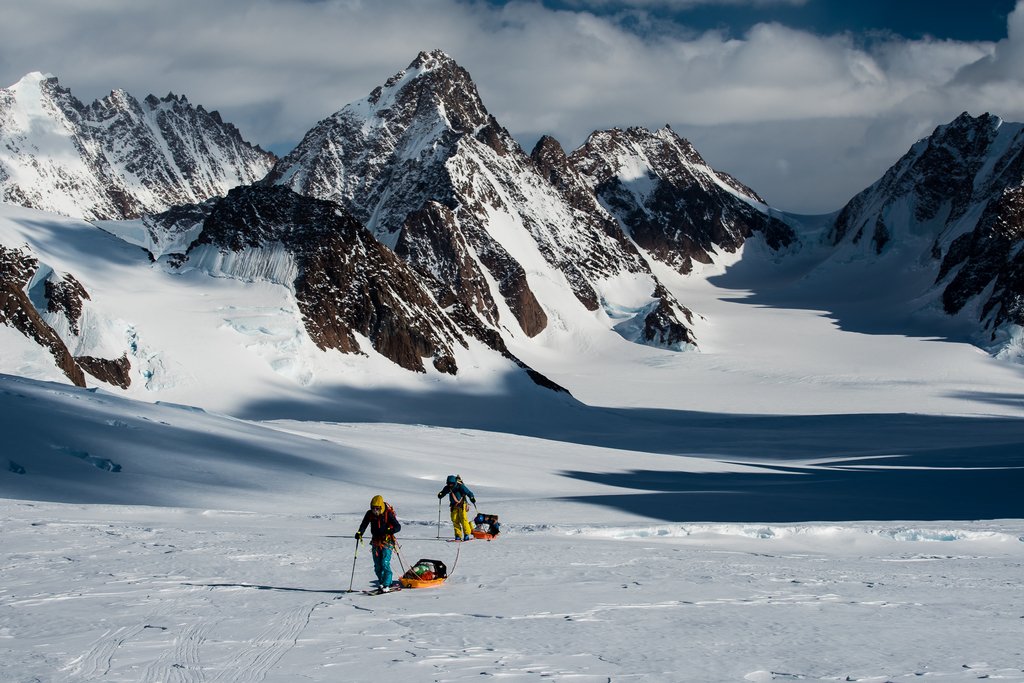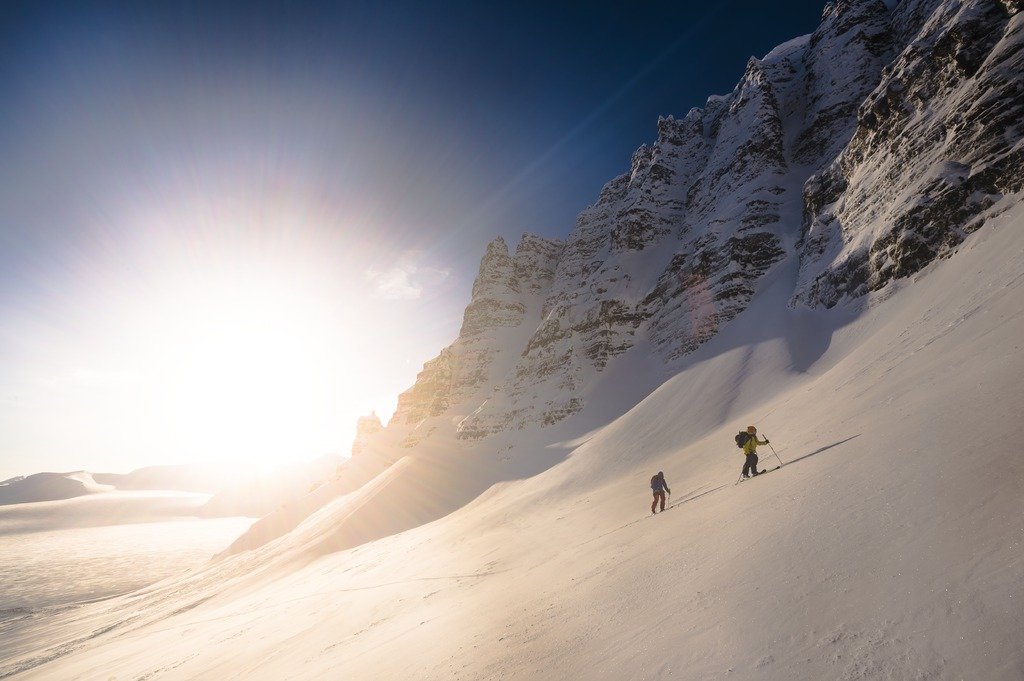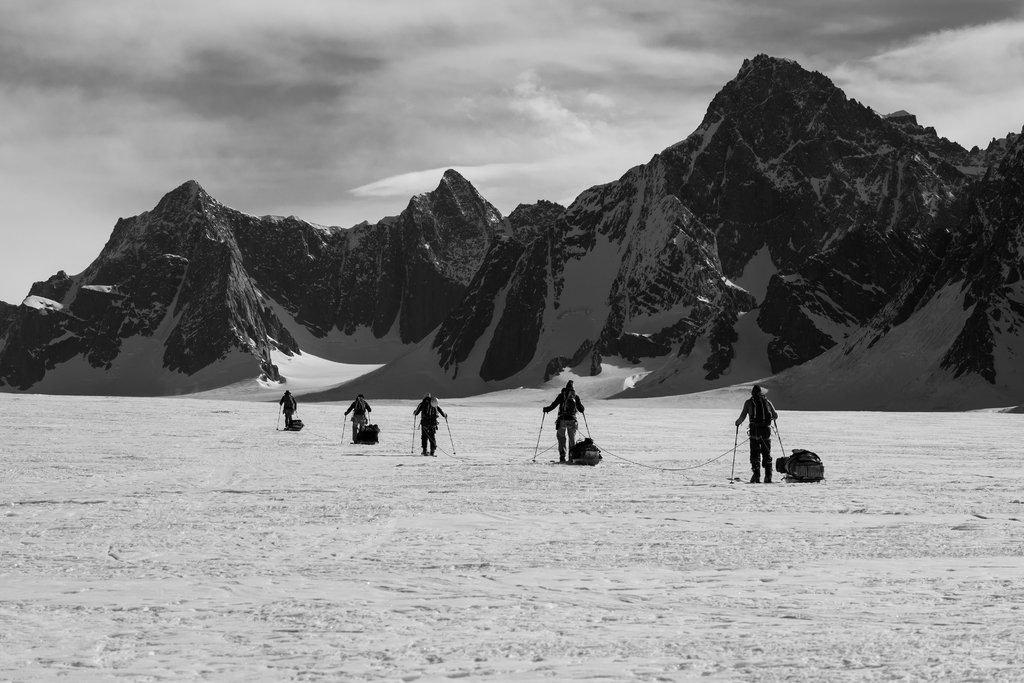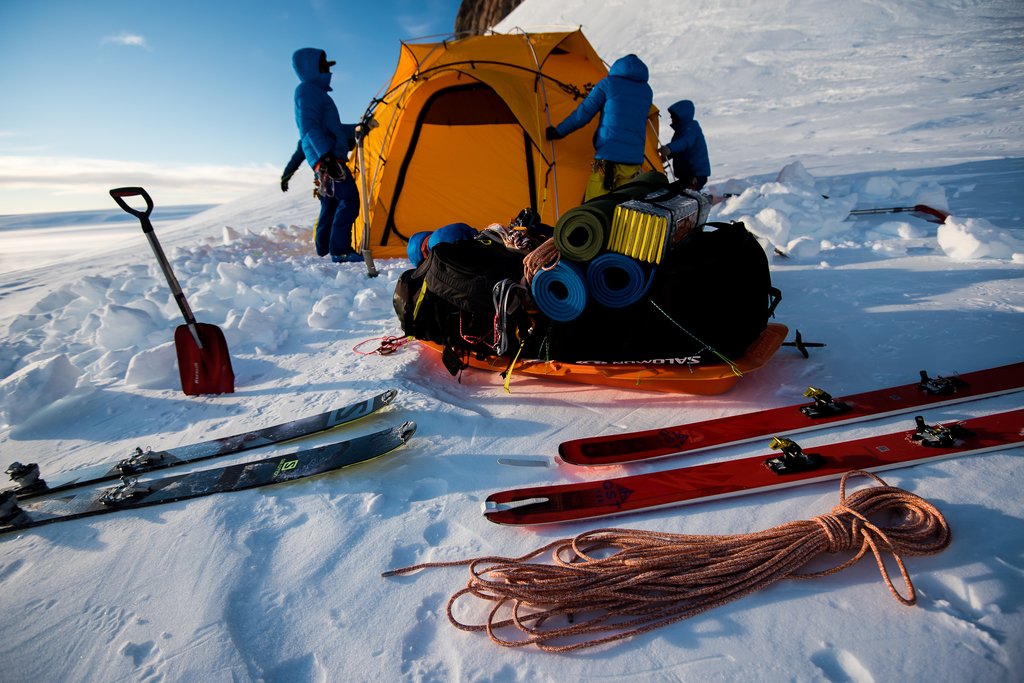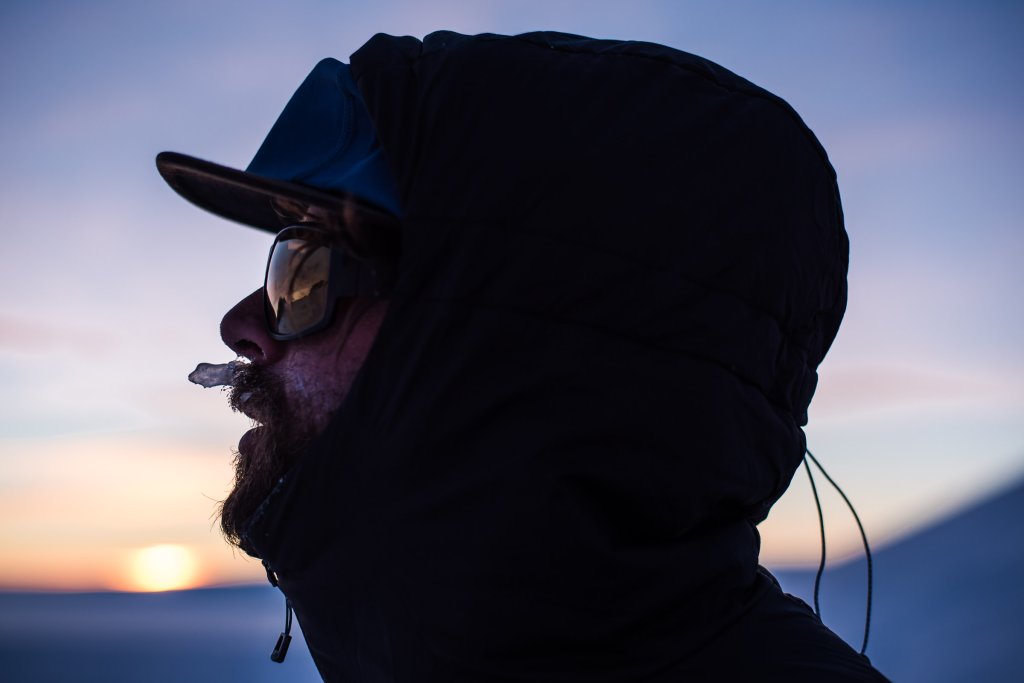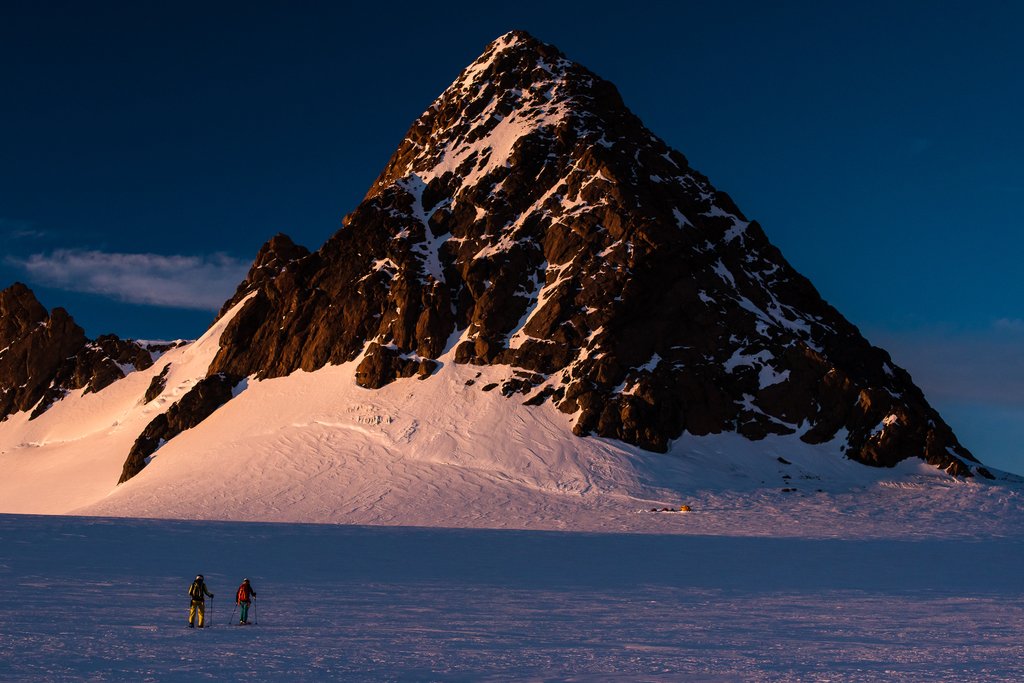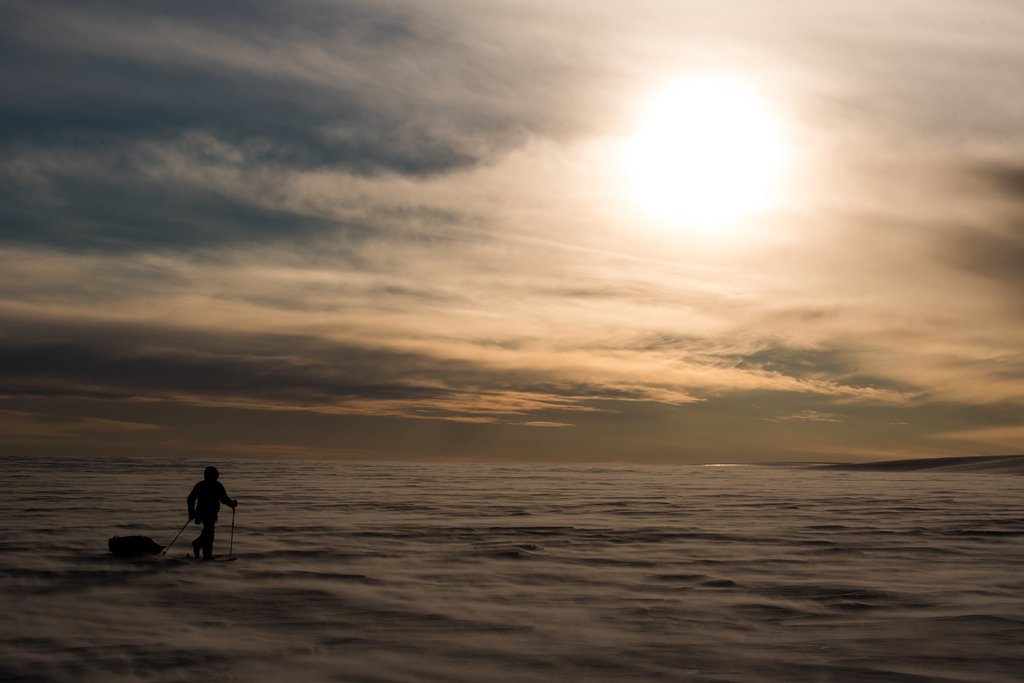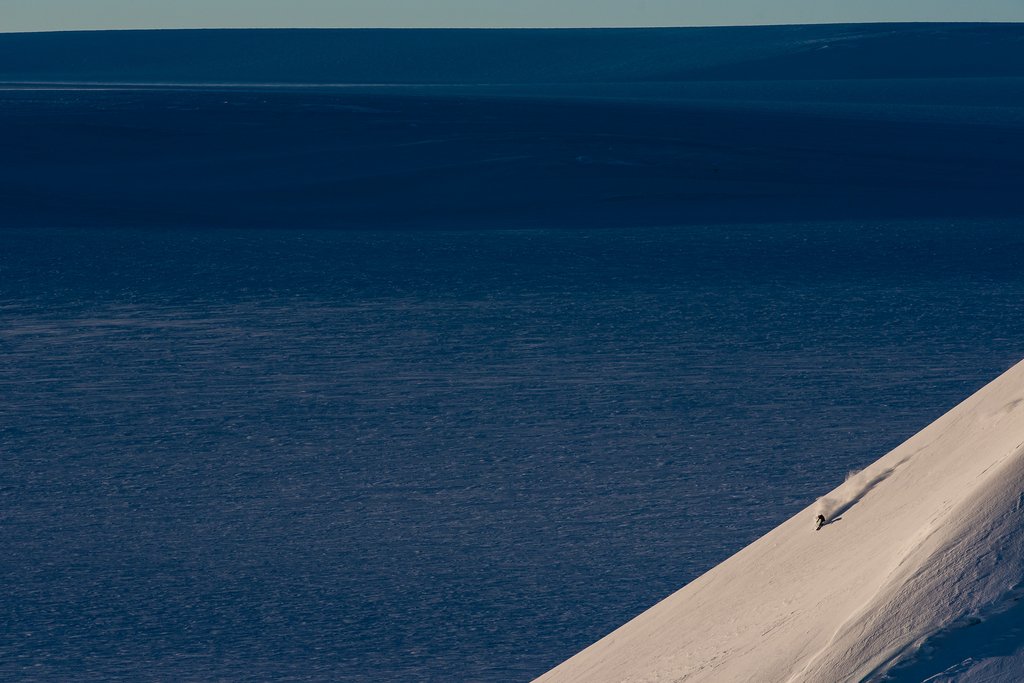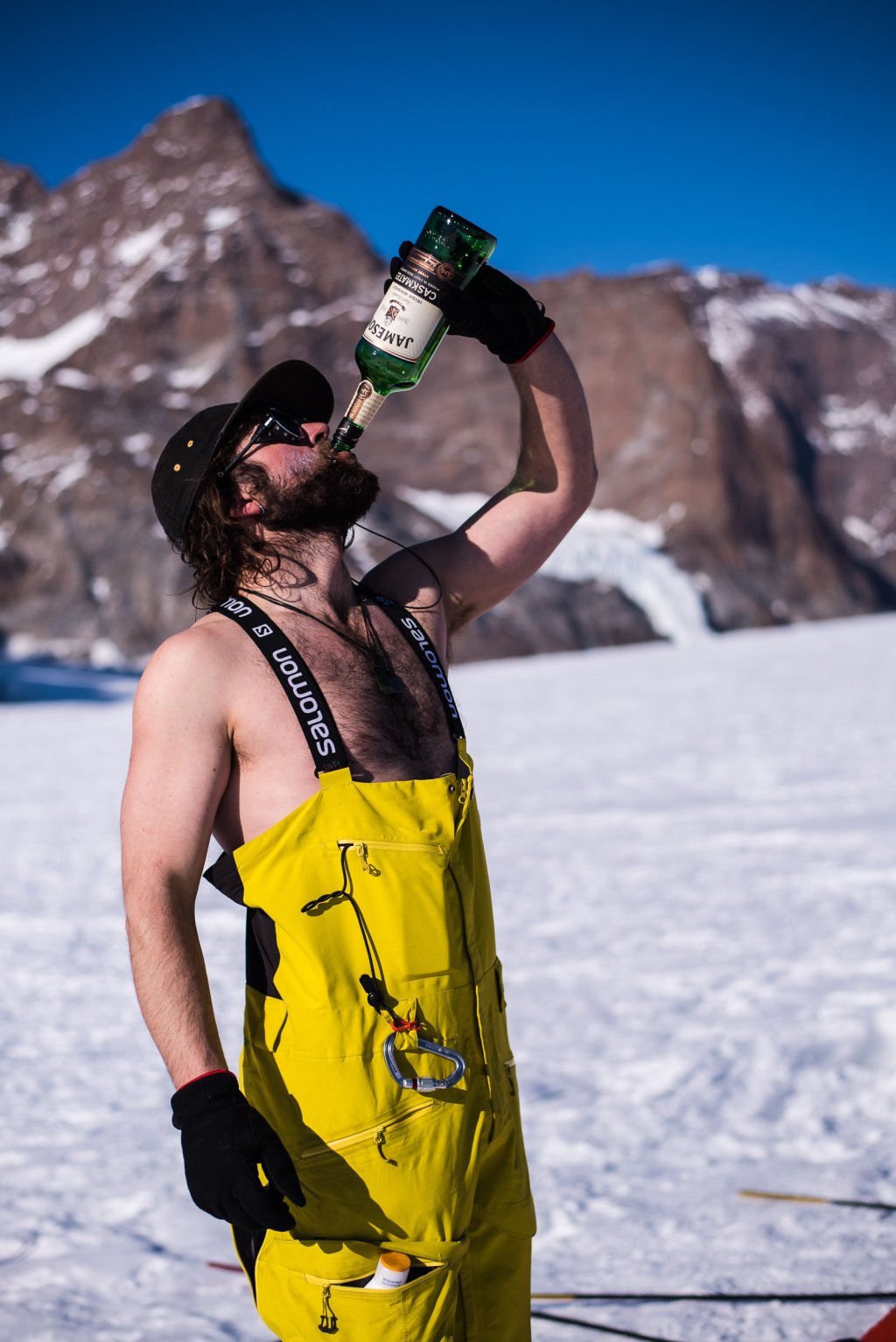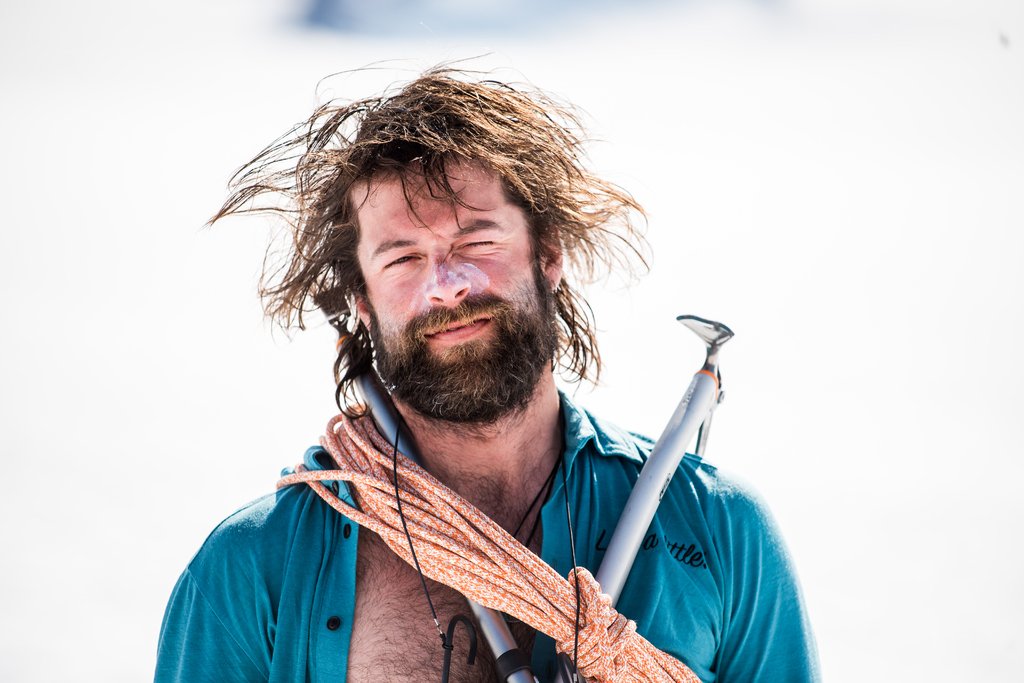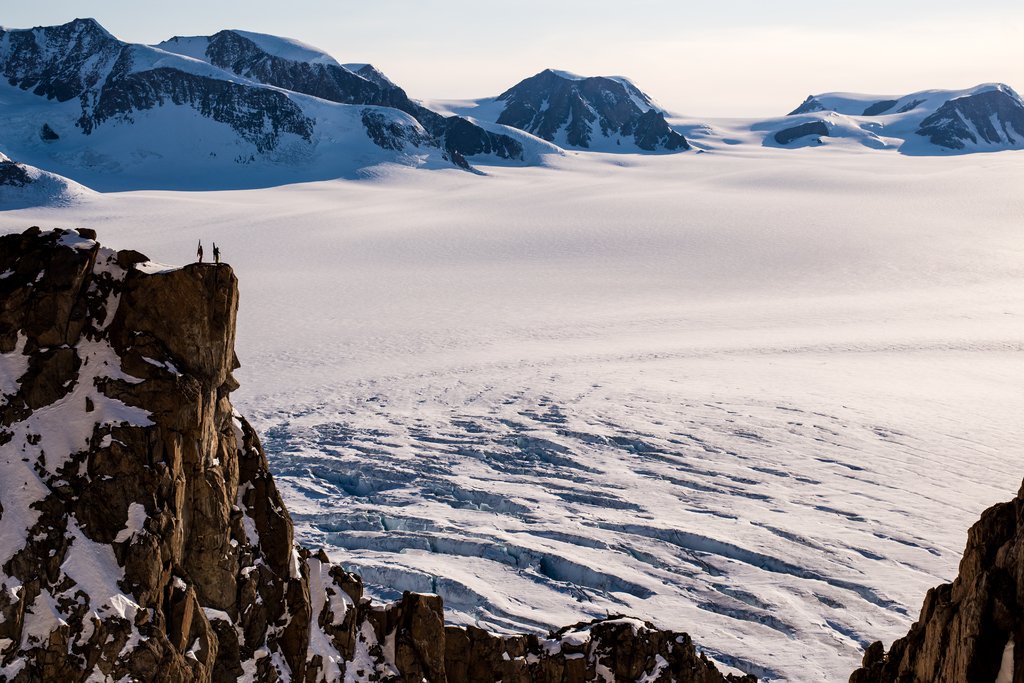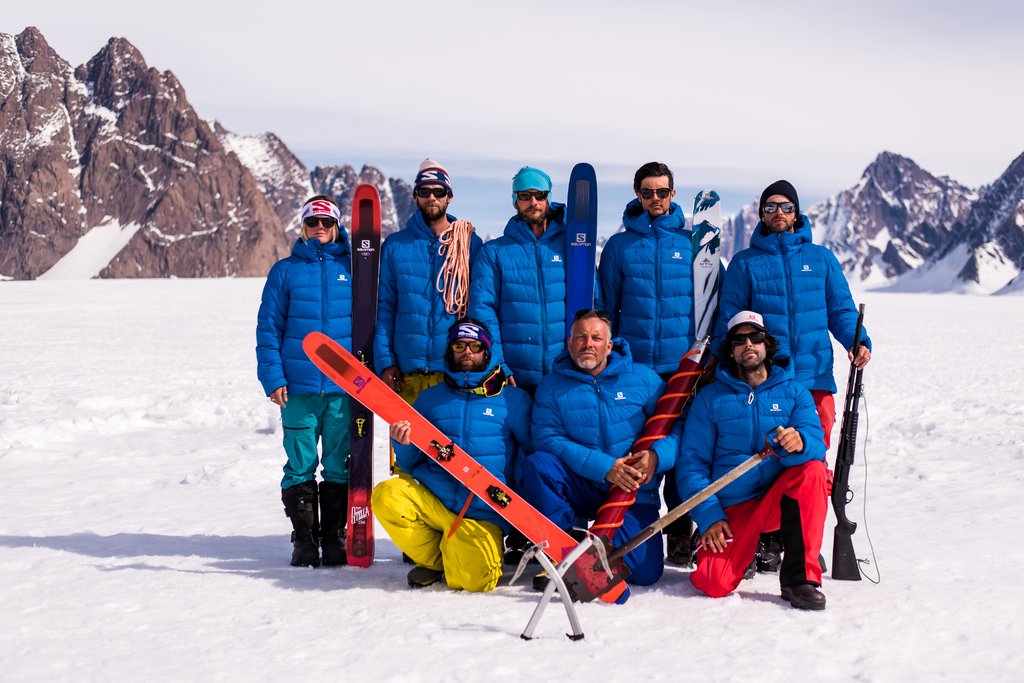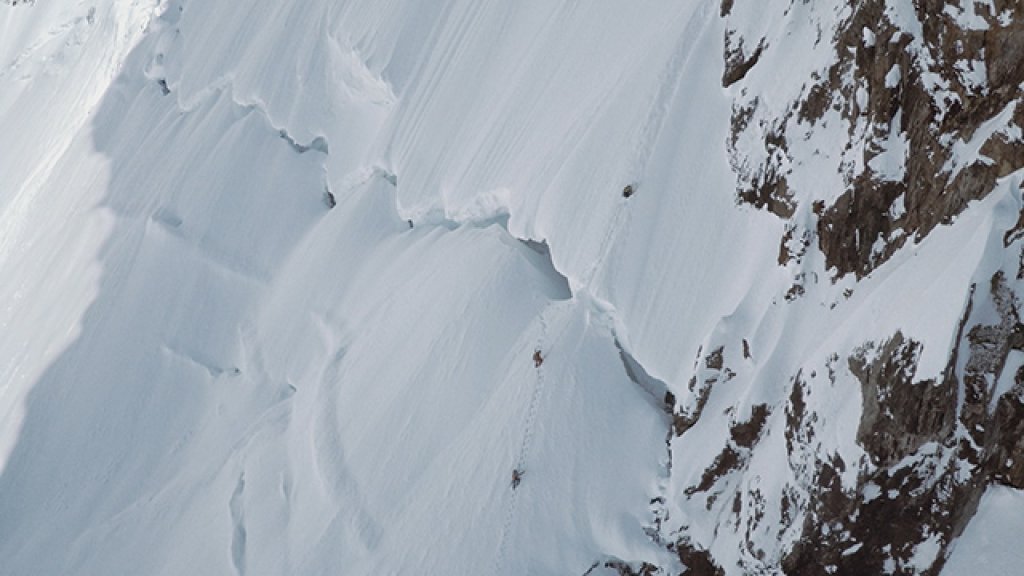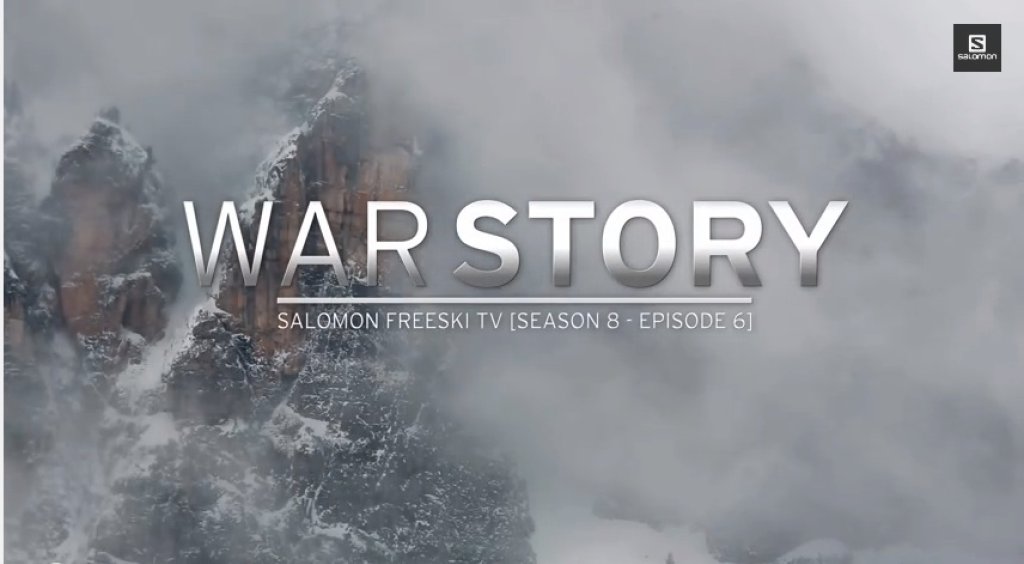The film
The team travels to Greenland and takes a look around before heading to the ice sheet by helicopter. Their destination is the area around Mount Forel, the second-highest mountain in Greenland. Due to a problem with the helicopter, the team is dropped off further down on the ice than originally planned and experiences an unexpectedly spring-like situation in terms of snow (the shoot took place during a period of unusually high temperatures). In addition, the kitchen tent threatens to fall into a crevasse. The camp is eventually moved to Mount Forel so that it can be climbed and Hubbard can take his measurements.
The skier
Chris Rubens, well-traveled Salomon athlete and frequent protagonist on Salomon TV about Guilt Trip:
PG: The movie is called Guilt Trip. Please explain what exactly you feel guilty about.
CR: As a pro skier I lead an interesting life of contradiction. I make a living off of traveling the world, showing off its beauty through the medium of skiing. In doing so we are creating a huge carbon footprint. Which in turn is harming the very environment that we love to showcase and cherish.
PG: The idea was that bringing a scientist would help ease the guilty feeling. Did it?
CR: Yeah that was definitely the idea to make the trip more justified. I don't think any of us had an illusion that just because we brought a scientist along it would make us green. Having along someone with so much experience in glaciology, climate change and just life in general made for some great discussions in camp with lots of varied ideas and opinions. Climate change is something that we all know and talk about, so I think bringing Alun along was partly selfish so that we could further understand this problem.
PG: Can you tell us a little about how this project came to be? Whose idea was it? What made you decide against just doing a normal ski movie about a trip to Greenland?
CR: This project is definitely Anthony Bonello's baby, he has been talking about it for a while. Most of Salomon TV's films have a strong story theme to them. This was certainly a more ambitious project than most episodes, but after Eclipse last year there was a desire to keep the momentum going.
PG: How did you find Alun? What made you approach Alun, rather than, say, scientists located in Greenland?
CR: Anthony was looking for a scientist that had worked with media before and could convey science in layman terms to the public. When telling the climate change story it is important to try and avoid the doom and gloom of it. You don't want people to feel too criticized or down on themselves, because that won't help anyone. Anthony is a great judge of character and I think that as soon as he got in touch with Alun, he knew we found the right guy. When you are stuck on a glacier for two weeks it is pretty important to be with the right people.
PG: In your words, what was the science that Alun did and why is it important? What were his results?
CR: Basically he conveyed to us that any information coming from the accumulation zone would be helpful as there is relatively little data from that part of the ice cap. His idea was to take ice core samples up in the accumulation zone. These were melted down and sent off to a lab in Europe to be analyzed for isotopes and particulate matter. Basically looking to see if there is an increase in particles causing the ice cap to discolour and melt faster.
